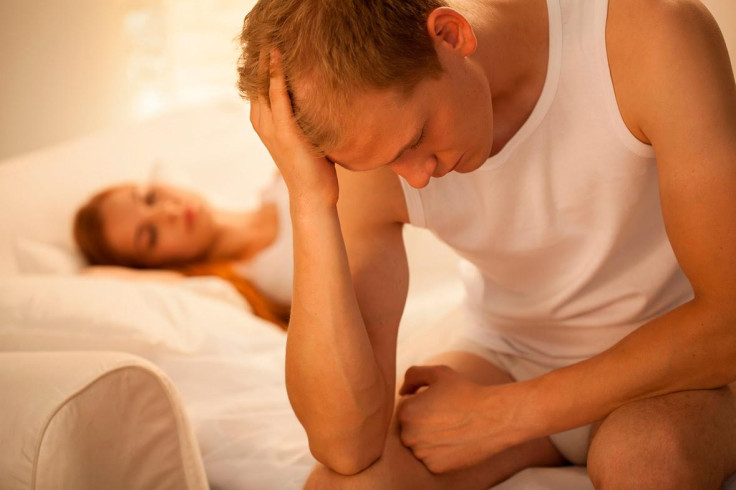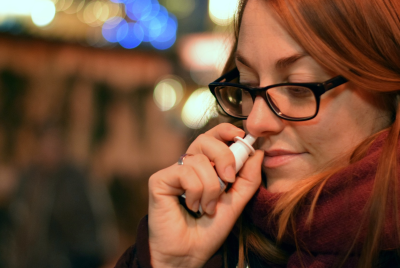Bright lights boost libido in men with low sex drive
Exposure to bright light to mimic seasonal changes increases testosterone levels and boosts libido.

Men with low sex drives could benefit from a treatment based on exposure to bright light, scientists at the European College of Neuropsychology congress in Vienna have announced. The method appears to increase testosterone levels and to lead to greater sexual satisfaction.
Around a quarter of men have a reduced sex drive after the age of 40 - one of the potential causes being that levels of testosterone, the main male sex hormone, start to decrease. However, options to boost these men's libido are limited.
Solutions that are available to them involve lifestyle changes such as improvements to the diet, regular physical exercise, or change to the medications that they take. In a small number of cases, testosterone replacement therapy, through patches or injections, can be proposed. As for medicines such as viagra, they do not boost libido, but can help men get an erection.
This new study, presented at the congress, suggests that bright light could be another alternative to address the problem of low sexual desire in men. Scientists know that sexual drive varies depending on the season, indicating that ambient light and libido may be related. Previous research published in Neuroscience Letters 2003 had also shown a link between hormone production and light, as levels of LH - a hormone that raises testosterone levels in men -rose following one hour of bright light therapy in healthy men ages 19-30.
Finally, light therapy also looks promising for some psychiatric disorders, such as depression.
Bright light or not
A team of scientists, from the University of Siena in Italy, decided to test psychological and physiological response to bright light. They conducted a pilot randomised placebo-controlled trial, to gather preliminary clues about the relationship between exposure to light and sexual function in men. The trial looked at whether bright light, like you can get in the summer, is more effective than lower-intensity light to restore desire.
Thirty-eight participants – patients from the Urology Department of the University of Siena – were recruited, after being diagnosed with hypoactive sexual desire disorder or sexual arousal disorder, both conditions which are characterised by a limited sexual desire and lack of interest in sex. The researchers conducted tests to understand what their level of interest in sex at baseline was. The men were therefore asked to complete the Structured Clinical Interview for DSM-IV sexual disorders and self-administered rating scale of the level of sexual satisfaction, ranging from 1 to 10. The scientists also measured their levels of testosterone.
The participants were then divided at random into two groups, with both having similar levels of sexual satisfaction at the beginning of the trial. During two weeks, the first group received regular treatment with exposure to bright light while the control group was treated with a light box which had been adapted to give out significantly less light.
The researchers then retested sexual satisfaction and testosterone levels in those men. They found that men treated with the bright light showed a significant improvement in sexual satisfaction, approximately three times higher than the control group.
Testosterone levels also increased in this group, while no significant changes were recorded among controls, so the scientists hypothesised that these hormonal changes were potentially responsible for the renewed sexual interest experienced by these participants.
"The increased levels of testosterone explain the greater reported sexual satisfaction. In the Northern hemisphere, the body's testosterone production naturally declines from November through to April, and then rises steadily through the spring and summer with a peak in October. You see the effect of this in reproductive rates, with the month of June showing the highest rate of conception. The use of the light box really mimics what nature does", explains lead author Andrea Fagiolini.
For the future
The next step will be to replicate these findings in larger studies. Fagiolini told IBTimes UK that this research could also be interesting to treat female sexual dysfunction. Indeed, the scientists will measure in future trials levels of LH, a key female hormone.
It will be some time before a clinically approved treatment emerges from this work - it may not be suitable for people with eye conditions, as bright light could have a negative health impact.
The scientists will also need to explain in greater details the effects of bright light on hormones. So far, they believe that the reason light therapy works is that it inhibits the pineal gland in the centre of the brain which triggers the production of more testosterone.
© Copyright IBTimes 2025. All rights reserved.




















